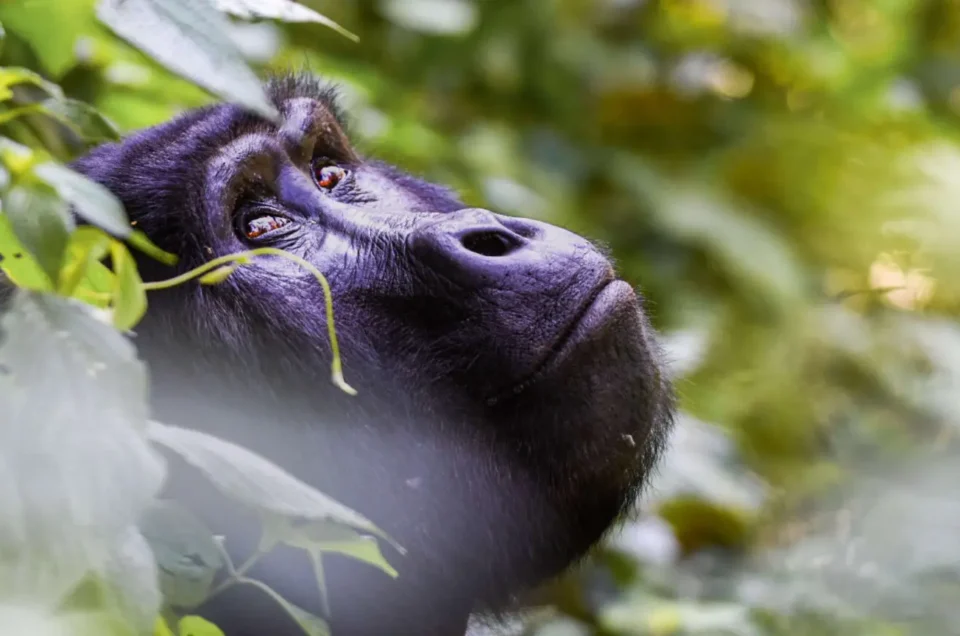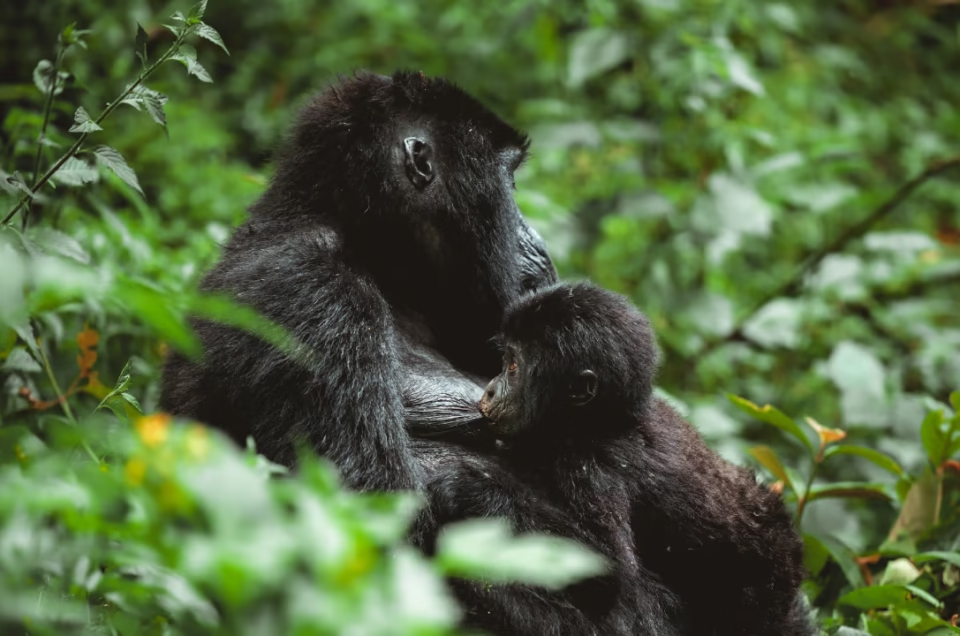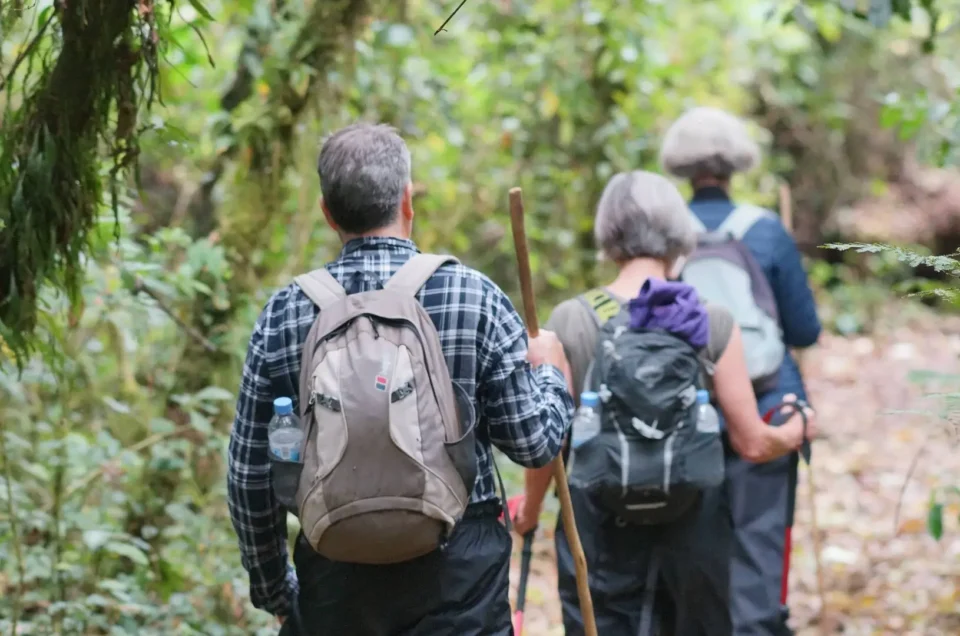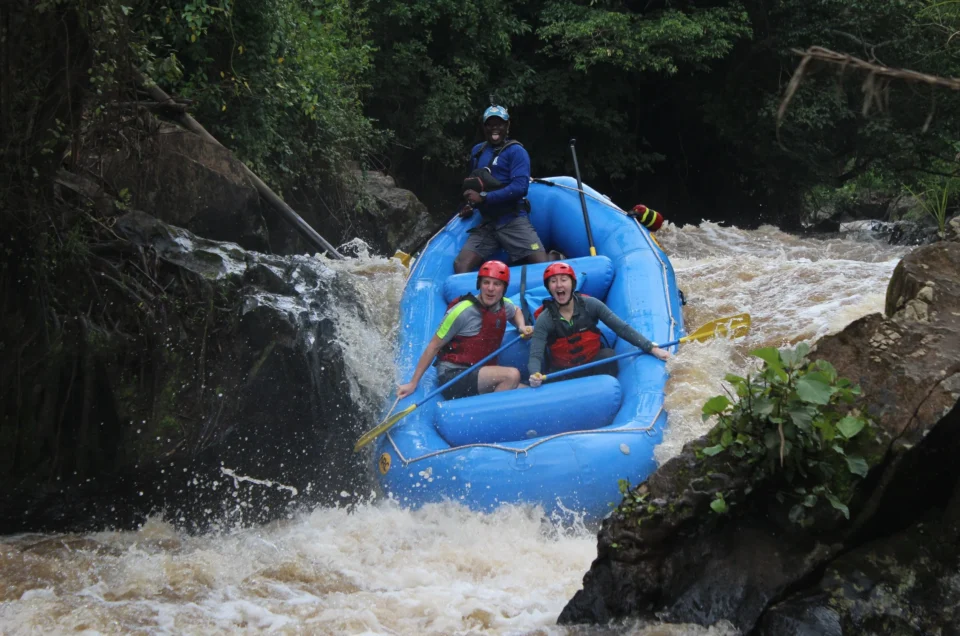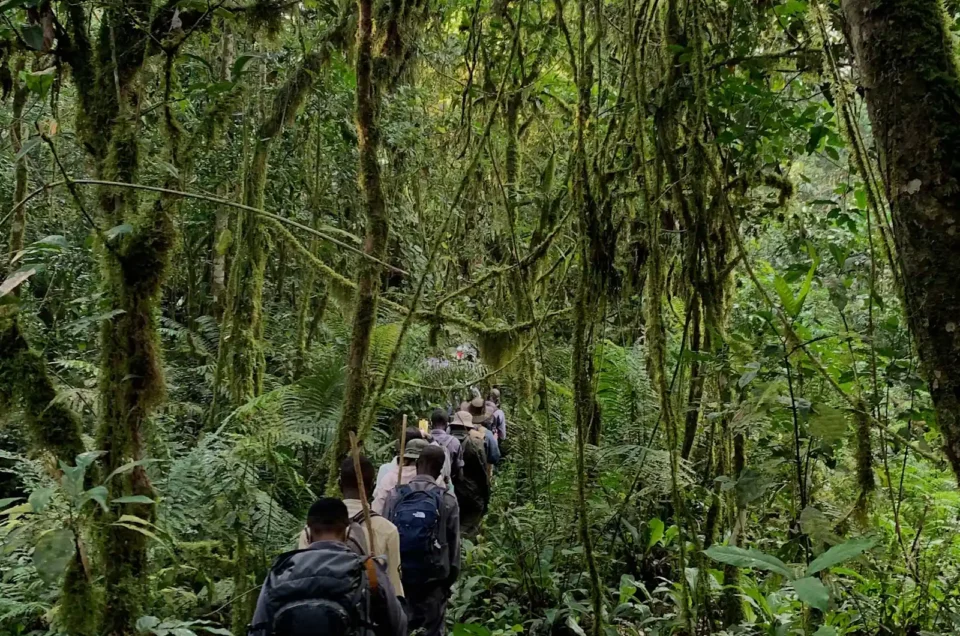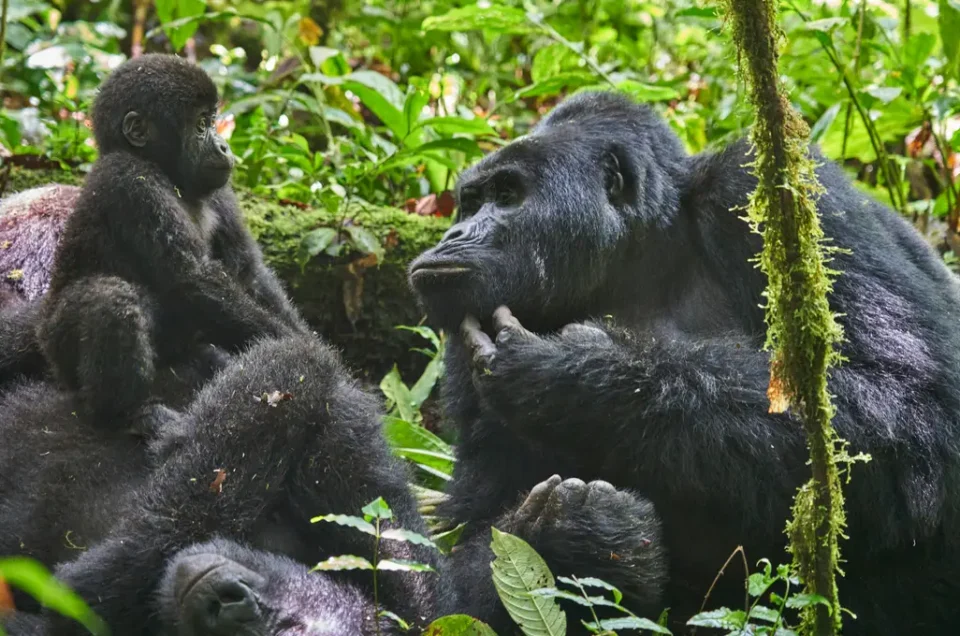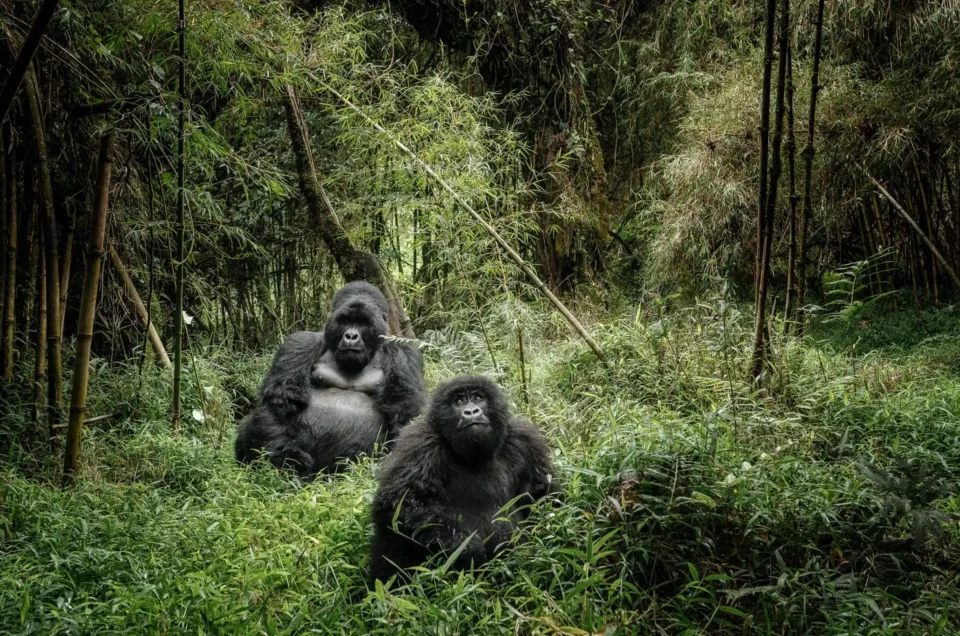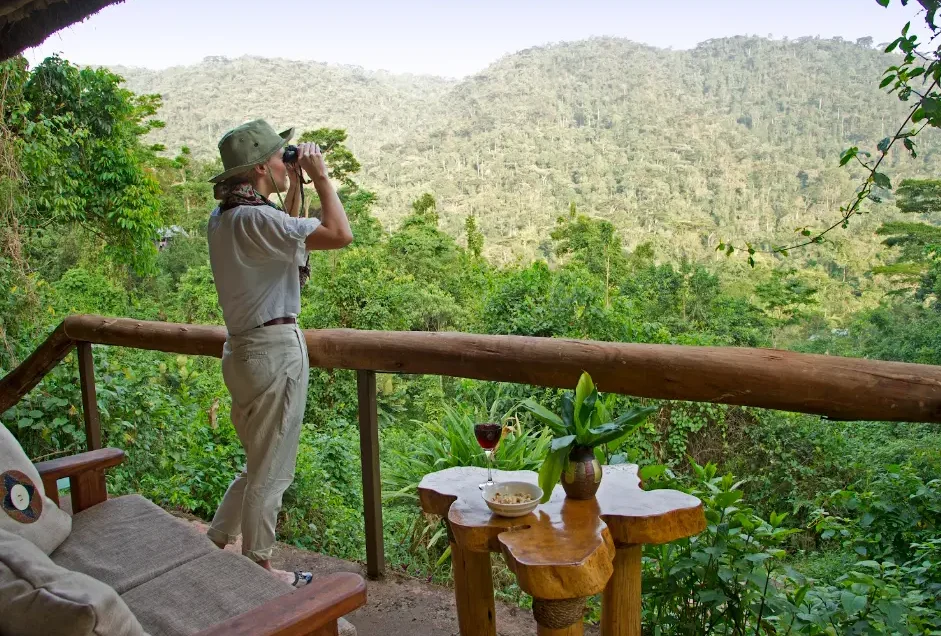Categories
- Accommodation
- Accommodation at Kibale Forest
- Budget accommodation at Kibale
- Budget accommodation in Uganda
- Budget Hotels in Entebbe
- Budget Murchison Falls Accommodation
- Bwindi Guides
- Bwindi National Park Guides
- Entebbe Hotels
- Exclusive Lodges In Murchison Falls National Park
- Exclusive Lodges in Queen Elizabeth National Park
- High End Accommodation At Kibale
- Kibale
- Luxury accommodation at Kibale
- Luxury Accommodation in Queen Elizabeth National Park
- Luxury Hotels In Entebbe
- Luxury Murchison Falls Accommodation
- Midrange accommodation at Kibale
- Midrange Hotels In Entebbe
- Midrange Murchison Falls Accommodation
- Murchison Falls Guides
- Murchison Falls Lodges
- News
- Popular
- Queen Elizabeth Guide
- Queen Elizabeth National Park Accommodation
- Semi-Luxury Entebbe Hotels
- Travel Guide
- Uganda Honeymoon Lodges
- Uncategorized
Bwindi Impenetrable Forest
Bwindi Impenetrable National Park
Dense, mountainous, lush, breathtakingly beautiful – and poetically named. Bwindi Impenetrable Forest National Park is not, however, entirely impenetrable.
This Park protects a magnificent range of forested hills in southwestern Uganda and has been declared a Natural World Heritage Site by UNESCO on account of its rich biodiversity.
It’s here, deep in the tangled heart of Bwindi Impenetrable Forest, that nearly half the world’s remaining mountain gorillas find refuge. A face-to-face encounter with these fascinating creatures while gorilla trekking (US$800 per person, which includes park entry and compulsory guides) is the ultimate highlight of a safari to Africa for many visitors.
A close-quarters encounter with a male silverback gorilla can be a hair-raising experience, especially if you’ve only ever seen large wild animals from the safety of a car. But despite their intimidating size, gorillas are gentle giants, entirely vegetarian and quite safe to be around.


Reasons to Go Gorilla Trekking in Bwindi
1. See Mountain Gorillas in the Wild
Bwindi Impenetrable Forest in Uganda is home to about 500 mountain gorillas—almost half of the world’s population. More than 25 family groups live here, and each one can be visited by just eight people per day.
This makes every trek a personal and special experience. Trekking through Bwindi can be different each time. Some hikes are short and easy, while others are longer and more challenging, going through thick forest and steep hills. But no matter how tough the journey is, seeing gorillas in the wild is truly worth it.
When you come face-to-face with a gorilla family—hearing their soft sounds, watching them eat, play, or rest—it’s unforgettable. These gentle giants share 98% of our DNA, and being near them feels deeply meaningful.
2. A True Jungle Adventure
Gorilla trekking in Bwindi is a true jungle experience. The forest is often covered in mist, full of green plants, muddy trails, and mysterious sounds all around. Steep hills drop into deep valleys with fast-moving streams, and birds sing loudly from the treetops. The name “Bwindi” means “impenetrable” in the local Ugandan language.
You’ll walk through thick bushes, climb over rocks and roots, and cross little streams. The paths can be slippery and tough, but that’s all part of the adventure. This is one of Africa’s oldest rainforests, filled with giant trees, bamboo, vines, ferns, and even stinging nettles. It’s wild, untouched, and full of life.
Every step takes you deeper into the jungle, closer to a moment you’ll never forget—seeing gorillas in their natural home. Bwindi isn’t the easiest place to visit, but it’s the most exciting. It’s a true adventure for anyone who loves nature and wants to experience something real and unforgettable.
3. Biodiversity Beyond Gorillas
Bwindi isn’t just about gorillas—it is a forest bursting with life! This amazing jungle is home to over 1,000 types of plants and 120 different animals. Some of them don’t live anywhere else in the world! It’s the only place on Earth where mountain gorillas and chimpanzees live in the same forest.
You might also spot other playful monkeys like colobus monkeys, red-tailed monkeys, and the rare L’Hoest’s monkey swinging through the trees. Down on the ground, shy animals like forest hogs, duikers, and even forest elephants quietly move through the thick greenery—though they’re very hard to see! Bwindi is also a dream spot for bird lovers. Uganda has half of all Africa’s bird species, and Bwindi alone has 350 of them!
Look out for bright-colored birds like turacos, sunbirds, and the mysterious African green broadbill. Birdwatching here feels like a fun jungle treasure hunt! And don’t forget the butterflies—over 300 kinds flutter through the forest like little flying rainbows. Every corner of Bwindi is full of color, sound, and life.
4. Sustainable Tourism Efforts
Gorilla trekking in Bwindi isn’t just exciting—it actually helps protect the forest and the animals that live in it.
When you buy a gorilla trekking permit, the money goes to important things like stopping poachers, protecting wildlife, and studying gorillas. It helps keep the forest safe and healthy.
But that’s not all. The money also helps local people. It supports jobs for guides and rangers, and helps build schools, health clinics, and clean water systems in nearby villages. This gives people a good reason to protect the forest instead of cutting it down. So, every step you take in Bwindi is making a difference.
You’re not just seeing gorillas—you’re saving their home and helping local families. It’s a fun adventure that also does something good. That’s what makes it truly special!
5. Lower Gorilla Permit Price
A gorilla trekking permit in Bwindi costs $800, which is a lot cheaper than in nearby Rwanda where it cost $1,500. This makes Bwindi a great choice if you want to see gorillas without spending too much. Bwindi Impenetrable National Park also offers a special gorilla habituation experience that costs $1,500.
With this, you get to spend up to four hours with the gorillas, instead of just one hour like on the standard gorilla trek. This means more time to watch them play, eat, and live their lives—making the visit extra special and unforgettable.
Safaris To Bwindi Impenetrable Forest
Bwindi Impenetrable Forest FAQs
When is the best time to visit Bwindi?
You can visit Bwindi Impenetrable Forest at any time of the year. Most people come to Uganda to see the gorillas, and you can almost always find them. The best time to go is in the dry months from June to August and December to February. The trails are easier to walk on then. In the rainy months, the paths can be slippery and harder to use. It can be disappointing if it rains on the day, since gorilla trekking is a once-in-a-lifetime trip. However, the guides work hard to make the trip special, no matter the weather. If it rains a lot, they may wait in a dry place until the rain stops before taking you to see the gorillas.
How long is the drive to Bwindi National Park?
From Kampala, Uganda’s capital, or nearby Entebbe International Airport, it takes at about 8 yo 10 hours to drive to Bwindi without stopping. If you want to go straight from Entebbe to Bwindi, it’s easier to take a flight to Kihihi (for Buhoma or Ruhija) or Kisoro (for Rushaga or Nkuringo). The flight takes about 1 hour and 45 minutes. Bwindi is actually much closer to Kigali, the capital of Rwanda, so many road trips to the park start from there. It takes about 4 to 5 hours to drive from Kigali to Rwanda.
Many visitors also visit Bwindi as part of a longer road trip in Uganda. From Queen Elizabeth National Park, the drive takes 3–6 hours, depending on where you start and which of the four trekking areas you are visiting. From Lake Mburo National Park, the drive takes 5–7 hours.
Are the hiking trails in good condition?
Gorillas move around freely and don’t follow any set paths. Your guide will first take you on a forest trail to get close to a gorilla group. When you are near, you may need to leave the trail and follow the guide and trackers through thick vegetation. They will find the easiest way for you and use machetes to clear branches. Bwindi Impenetrable National Park has very dense vegetation, and even the trails can be overgrown. After rain, the paths can also be slippery. It’s a good idea to hire a porter. They can carry your bag and give you a hand to help you walk safely.
Are gorilla sightings guaranteed in Bwindi?
Gorillas move freely in the forest, so finding them can sometimes be tricky. Before your trek, the head ranger will tell you that sightings are not guaranteed. However, in recent years the success rate has been as good as 100%, so you can assume you will get to see the gorillas. The main reason people miss out is if they are not fit enough and choose to turn back. Most people who are reasonably fit make it, and guides and porters will help you — sometimes even pulling or pushing you up the slopes. To improve your chances, bring a walking stick, water, a rain jacket, snacks, and good hiking shoes.
Are mountain gorillas aggressive?
Mountain gorillas are not aggressive at all. In fact, they are often called “gentle giants.” They are huge, but their calm nature is the reason we can safely get close to them on foot. Sometimes, males might act aggressively toward other males, usually to show who’s boss. These fights often end with one male leaving the group, though very rarely they can be deadly. A gorilla might also do a “mock charge” toward tourists — running at you to scare you — but this has never caused injury. Before your trek, your guide will explain exactly what to do if a gorilla comes close or shows any sign of aggression. If you follow their instructions, you’ll be completely safe.
How much time do I get with the gorillas?
You get to spend one unforgettable hour with the gorillas. Bwindi gorilla trekking begins in the morning, and finding the gorillas can take anywhere from 30 minutes to 5 hours, depending on where they are that day. When your group gets close, you’ll stop, leave extra belongings with the trackers, and move in quietly for the special encounter. During your hour, your guide will position you for the best views and photographs, making sure you get a chance to see different members of the group — from playful youngsters to the powerful silverback.
Bwindi Travel Guides
Our Trusted Partners






